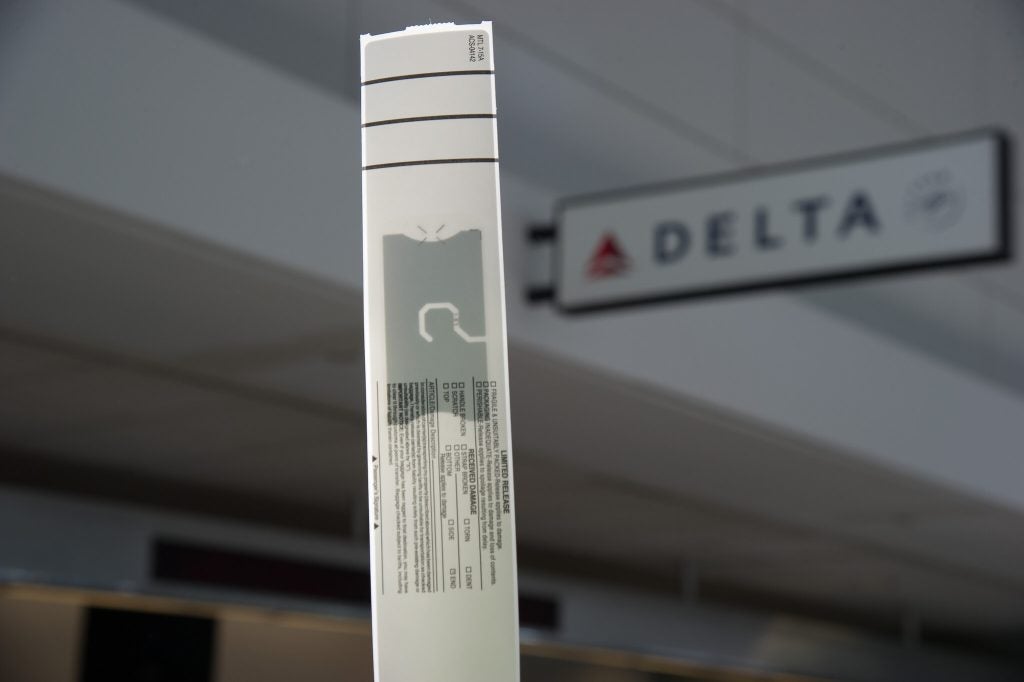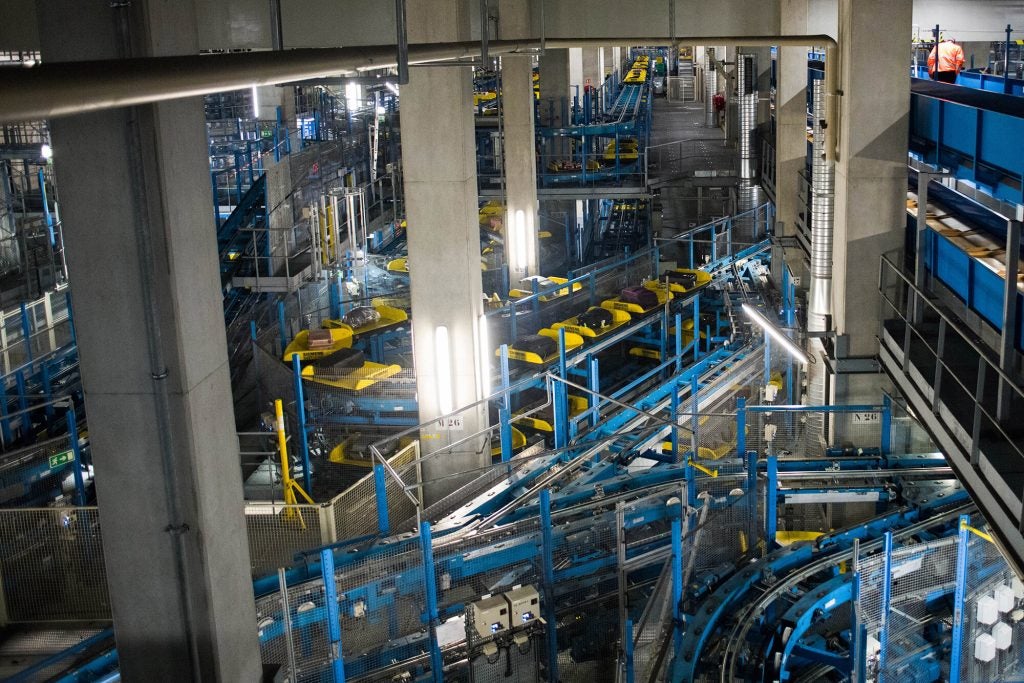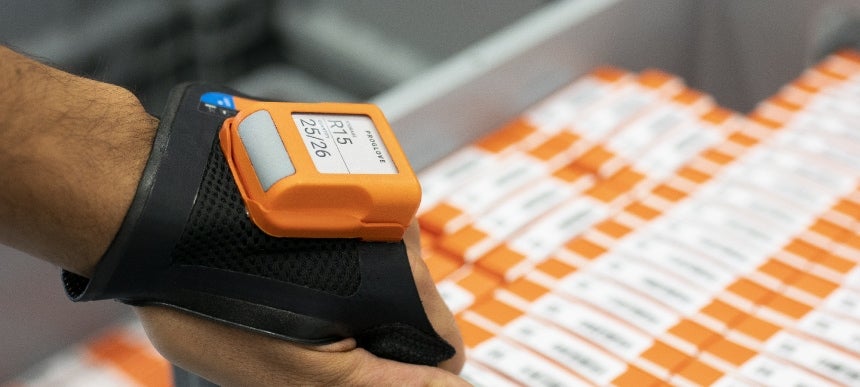
Despite rising passenger numbers, the rate of lost baggage fell last year. According to research by IT firm SITA, the number of bags mishandled by the industry in 2023 reduced from 7.6 to 6.9 per thousand passengers.
“Coming out of Covid-19, we’d see those pictures of mountains of baggage, so for the last 18 months the industry has put a lot of effort into reducing the mishandled baggage rate to make sure that passengers have the confidence to check in their bags,” says Nicole Hogg, SITA’s director of baggage.

Discover B2B Marketing That Performs
Combine business intelligence and editorial excellence to reach engaged professionals across 36 leading media platforms.
“They’ve done this by introducing more automation, increasing tracking, and giving passengers more visibility and the proof is in the pudding! We’ve seen a 9.2% reduction in the mishandled baggage rate from 2022 – today it’s really difficult to lose a bag.
Indeed, of all mishandled baggage last year, only 7% were lost or stolen – the majority (80%) were delayed. This most commonly occurs during international transfers, and so the industry is keenly embracing new technologies developed to further improve baggage handling performance.
Spoilt for choice
Airlines and airports investing in digital and automation solutions are seeing significant improvements in their mishandled baggage rates, and there’s a wide range of solutions to choose from.
Technologies on offer include robotics, radio frequency identification (RFID) systems, real-time baggage tracking and electronic bag tags (EBT), and digitalisation and simulation tools.

US Tariffs are shifting - will you react or anticipate?
Don’t let policy changes catch you off guard. Stay proactive with real-time data and expert analysis.
By GlobalDataDelta Air Lines, for example, significantly improved its baggage handling performance using RFID technology, introducing over 600 RFID readers at 84 airports. Several airlines, including Delta, United, and American, use EBT alongside Bluetooth to enable passengers to track their baggage through apps, which makes for a more convenient and stress-free travel experience.

“There are simulation tools that integrate data from different terminals, allowing baggage handling teams to analyse capacity and bottlenecks under various scenarios, optimising equipment and manpower reliability,” notes Dr Emre Serpen, aviation principle at digital transformation specialist Publicis Sapient.
Data analytics also has a key role. This is being used to predict and prevent potential issues and identify patterns that could lead to an item being lost, as well as analysing real-time data and making immediate adjustments to a baggage handling system (BHS) to improve performance.
The benefits of automation
Automation is having the biggest impact on baggage handling performance, by reducing the risk of human error as well as optimising efficiency and faster processing. Automated BHS’;’ are being used around the world – including large airports such as Heathrow, Changi, and Istanbul – to sort luggage and direct them to the correct flights.
“Hong Kong International Airport uses an automated baggage handling system that can process over 15,000 bags per hour with high accuracy,” says Serpen.
“These systems use precise algorithms to route baggage and minimise the risk or misrouting that can occur with manual handling. In addition, automated BHS’ are often part of integrated IT solutions that ensure all parts of the airline and its operations are synchronised, which reduces the change of baggage being lost during transfers.”

Baggage reflight solutions are of particular interest currently as a way of dealing with the challenge of mishandled bags during transfers. Take SITA’s WorldTracer Auto Reflight for example. When a bag is mishandled, its algorithm automatically reflights the bag on the next available flight without any human interaction, informing the customer of the situation.
“You can lower the risk of mishandling bags, but there will always be a small risk. It’s how you handle it when it does happen that matters. Being efficient and providing proactive communication will take that traditional anxiety and frustration away,” says Hogg.
Several airlines and airports have implemented reflight solutions, such as Lufthansa at Munich Airport, where the technology was given a chance to shine after a particularly nasty snowstorm.
“There were 8,000 bags that traditionally would’ve had to be processed manually. However, with this system they were all automatically reflighted without any human intervention, enabling all the staff to be customer-facing and focus on getting passengers to hotels,” Hogg notes.
The human factor in baggage handling
When it comes to technology implementation, there’s rarely a one-size-fits-all approach. While larger airports can make the most of an automated BHS, smaller regional airports might not have the necessary traffic, infrastructure or financial resources to justify such a significant investment.
But there are other options available to them. Some smaller airports, for example, have achieved notable reductions in luggage losses and waiting times, alongside improved customer and staff satisfaction, through the adoption of wearable technology.
“Take Talma Ecuador, which has experienced considerable success with wearable barcode scanners,” points out Clemens Zunk, chief of staff at tech company ProGlove. “Human-centric agile technology can improve safety, connect with software to allow for data analysis and pattern recognition, and allow for small time savings with each movement, cumulatively making a significant impact over days, months and years.”
It’s important to remember that improved baggage handling performance isn’t just down to technology. Robust procedures and staff collaboration also play a key role, and human reasoning and intuitiveness cannot be fully replaced.

“Full automation isn’t always the best option, particularly when items deviate significantly from the norm,” says Zunk.
“For example, automated systems may not be suitable for dealing with oversized luggage, yet customers with large luggage still expect a high level of service. This is where human intuition and more agile technology solutions show their worth. In addition, human oversight can catch potential issues that automated systems might miss.”
Even so, you cannot deny the benefits technology can bring to baggage handling performance, and work continues to make further advancements in this space.
“One of the things we’re currently focusing on is computer vision; being able to track a bag using images, which is quite powerful,” says Hogg.
“There’s still that 7% of bags getting lost, well we’re looking at using computer vision and AI technology to match bags. We see the future of baggage as being able to track your bag like an Amazon parcel and knowing where it is at all times.”
This article was originally published in our digital magazine Airport Industry Review. You can subscribe here for free.





